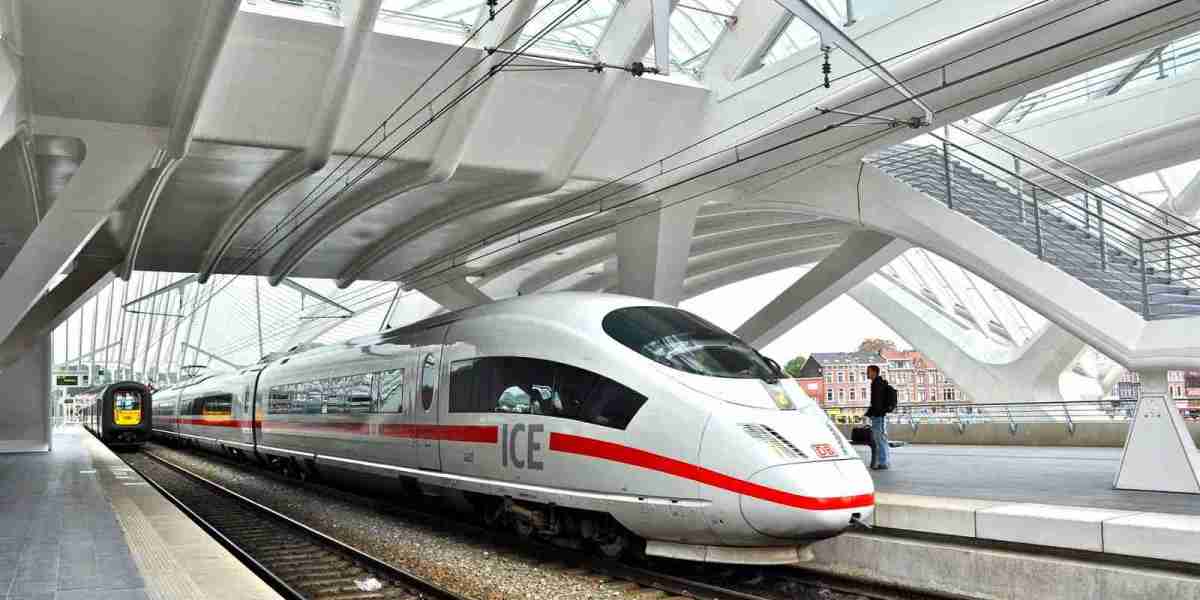Introduction
The smart railways market is undergoing a significant transformation, with Rail Traffic Management Systems (RTMS) at the forefront of this digital evolution. As rail networks become more complex and passenger expectations rise, innovative traffic management solutions are critical to ensuring safety, efficiency, and punctuality.
RTMS integrates advanced technologies like AI, IoT, big data analytics, and cloud computing to enhance train control, scheduling, and overall operational intelligence. This article explores the latest innovations driving change in RTMS and how they are reshaping the future of rail transportation.
What is a Rail Traffic Management System?
A Rail Traffic Management System (RTMS) is a comprehensive platform that enables the real-time monitoring, control, and optimization of railway operations. It coordinates various functions such as:
Train routing and scheduling
Signal and track management
Passenger flow coordination
Disruption and incident response
Modern RTMS solutions are designed to automate decision-making, improve coordination, and enhance service reliability.
Key Innovations Transforming Rail Traffic Management
1. Artificial Intelligence and Machine Learning
AI and ML algorithms are now being used to:
Predict traffic congestion and reroute trains proactively
Optimize scheduling based on historical and real-time data
Detect anomalies in train behavior and track conditions
These technologies enable predictive and prescriptive analytics, significantly improving operational agility and decision-making.
2. IoT and Real-Time Data Integration
Connected sensors on tracks, trains, and signaling equipment feed continuous data into the RTMS, allowing for:
Condition-based maintenance
Real-time asset tracking
Instant communication between train control systems
This Internet of Things (IoT) integration ensures timely responses to potential disruptions and enhances overall system resilience.
3. Centralized and Cloud-Based Platforms
Modern RTMS solutions are increasingly cloud-based, allowing for:
Centralized command and control centers
Scalable infrastructure for multiple regions
Remote monitoring and updates
Cloud platforms reduce infrastructure costs, enhance scalability, and support remote diagnostics and system updates.
4. Digital Twin Technology
Digital twins create virtual replicas of entire rail systems for simulation and testing. In traffic management, they allow operators to:
Model various scenarios (delays, accidents, high demand)
Optimize traffic flows before deployment
Visualize the impact of maintenance or infrastructure upgrades
This improves planning accuracy and minimizes real-world disruptions.
5. Enhanced Human-Machine Interfaces (HMIs)
Modern RTMS dashboards are equipped with intuitive, AI-powered interfaces that provide real-time visualizations, alerts, and actionable insights to operators. These systems:
Reduce manual workload
Enhance situational awareness
Speed up incident response
Benefits of Advanced RTMS in Smart Railways
Increased train punctuality and reduced delays
Optimized energy consumption and lower emissions
Improved safety through real-time monitoring
Efficient management of high-speed and mixed traffic corridors
Enhanced passenger satisfaction through better service reliability
Global Adoption and Market Growth
Countries around the world are investing heavily in RTMS innovations:
Europe is leading with the European Rail Traffic Management System (ERTMS) initiative.
India and China are deploying AI-based traffic management for expanding high-speed rail networks.
North America is focusing on integrating freight and passenger systems under unified platforms.
According to industry forecasts, the rail traffic management segment is poised for robust growth from 2025 to 2030, driven by urbanization, infrastructure upgrades, and the shift toward smart mobility.
Challenges in Implementation
Despite the benefits, there are notable challenges:
High capital investment and ROI uncertainty
Integration with legacy systems
Cybersecurity risks in connected platforms
Shortage of skilled professionals for digital rail systems
Addressing these concerns requires strong public-private collaboration, standardized protocols, and robust training programs.
Conclusion
Innovations in Rail Traffic Management Systems are central to the evolution of the smart railways market. By harnessing technologies like AI, IoT, and cloud computing, RTMS is enabling smarter, safer, and more reliable rail operations.
As demand for efficient mass transportation grows, investing in modern traffic management infrastructure is no longer optional—it’s a strategic imperative for governments and railway operators worldwide.




